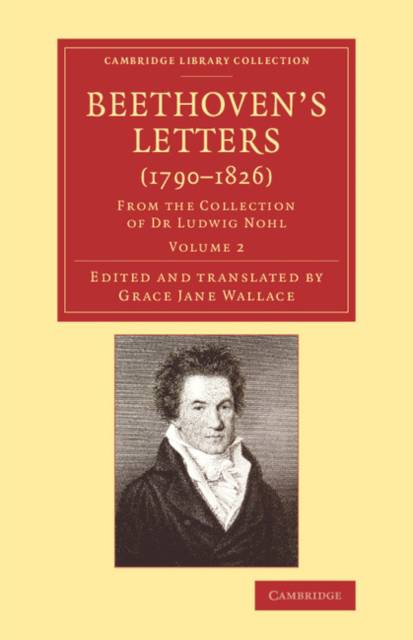
Bedankt voor het vertrouwen het afgelopen jaar! Om jou te bedanken bieden we GRATIS verzending (in België) aan op alles gedurende de hele maand januari.
- Afhalen na 1 uur in een winkel met voorraad
- In januari gratis thuislevering in België
- Ruim aanbod met 7 miljoen producten
Bedankt voor het vertrouwen het afgelopen jaar! Om jou te bedanken bieden we GRATIS verzending (in België) aan op alles gedurende de hele maand januari.
- Afhalen na 1 uur in een winkel met voorraad
- In januari gratis thuislevering in België
- Ruim aanbod met 7 miljoen producten
Zoeken
€ 66,45
+ 132 punten
Uitvoering
Omschrijving
Ludwig van Beethoven (1770-1827) was a prolific letter writer, with thousands of examples surviving to this day. Often written in great haste - 'in der Eile' was a common sign-off - they allow us to follow the great composer's anxieties and preoccupations, revealing the human figure behind some of the greatest music ever written. Despite the fact that 'many of Beethoven's letters slumber in foreign lands, especially in the unapproachable cabinets of curiosities belonging to various close-fisted English collectors', the German musicologist Ludwig Nohl (1831-85) published his collection of letters in 1865, and this two-volume English translation by Grace Jane Wallace (1804-78) appeared the following year, reflecting the fact that interest in Beethoven had not diminished nearly forty years after his death. In Volume 2 we read of Beethoven's despair as his health fails, and of his efforts to fulfil the commission that would become his greatest masterpiece, the Ninth Symphony.
Specificaties
Betrokkenen
- Auteur(s):
- Vertaler(s):
- Uitgeverij:
Inhoud
- Aantal bladzijden:
- 284
- Taal:
- Engels
- Reeks:
Eigenschappen
- Productcode (EAN):
- 9781108078498
- Verschijningsdatum:
- 6/11/2014
- Uitvoering:
- Paperback
- Formaat:
- Trade paperback (VS)
- Afmetingen:
- 140 mm x 216 mm
- Gewicht:
- 362 g

Alleen bij Standaard Boekhandel
+ 132 punten op je klantenkaart van Standaard Boekhandel
Beoordelingen
We publiceren alleen reviews die voldoen aan de voorwaarden voor reviews. Bekijk onze voorwaarden voor reviews.









